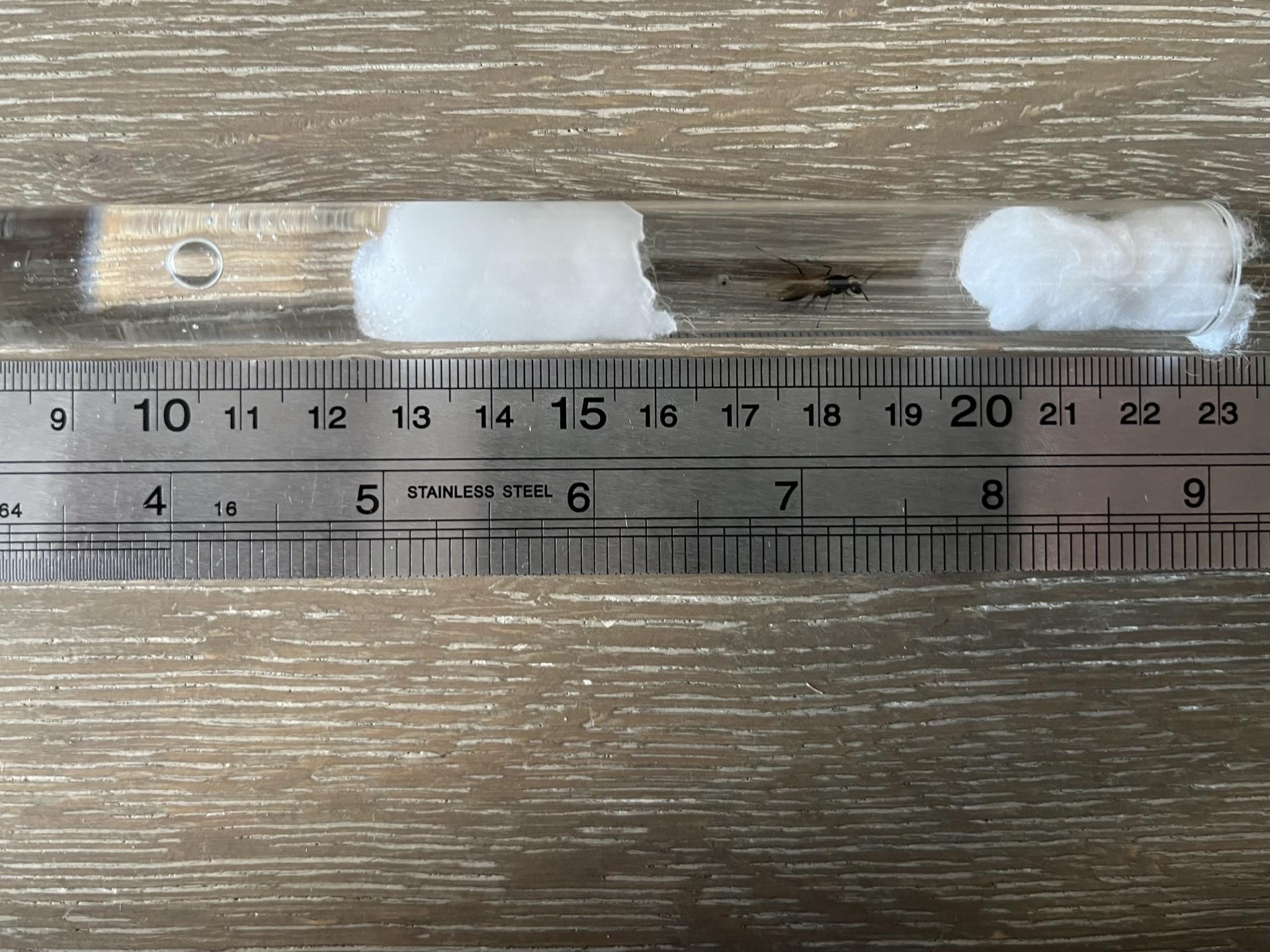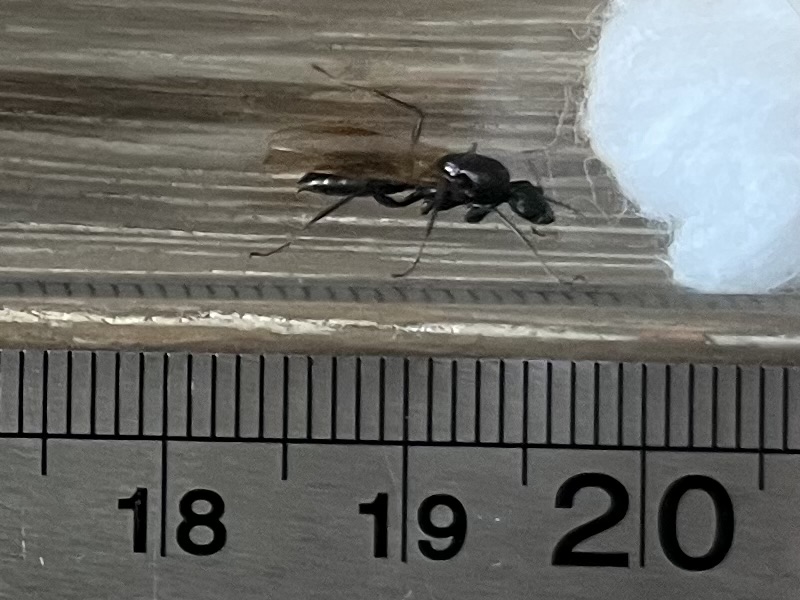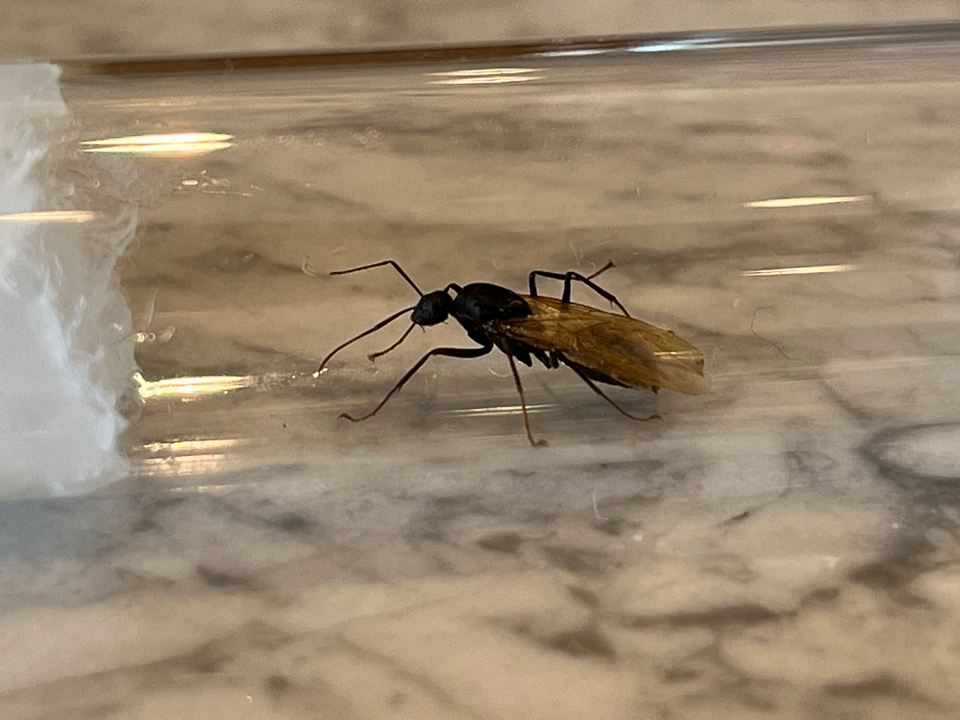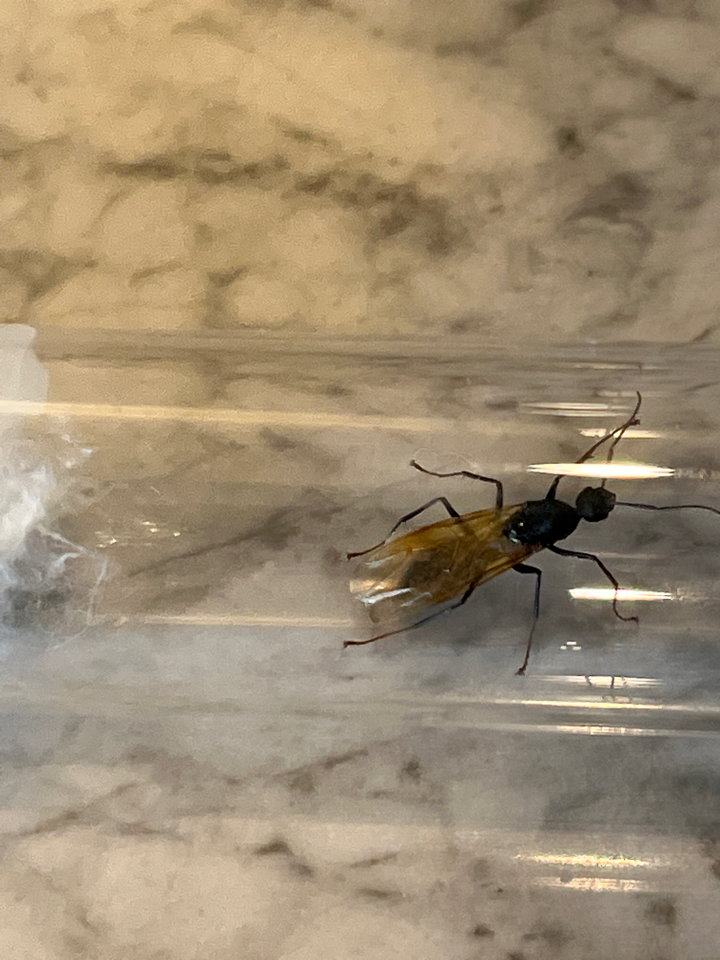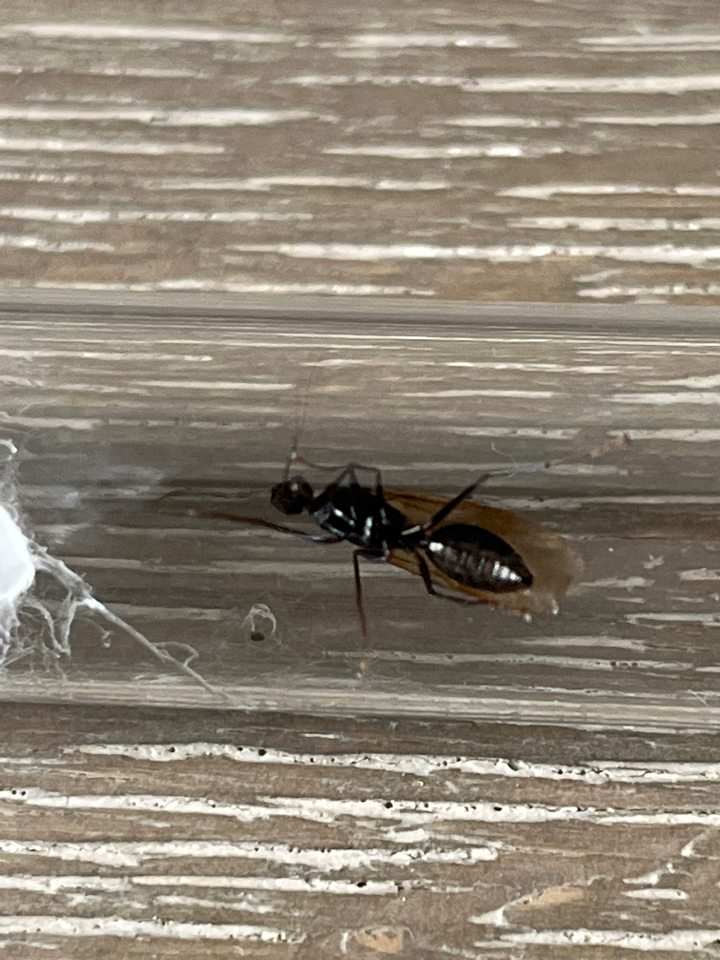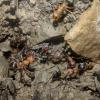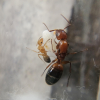- Formiculture.com
- Forums
- Gallery
- Members
- Member Map
- Chat
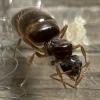
May 15, 2023 - NYC
Started By
Voidley
, May 15 2023 11:43 AM
5 replies to this topic
#1
 Offline
-
Posted May 15 2023 - 11:43 AM
Offline
-
Posted May 15 2023 - 11:43 AM
Hi there! I found this ant on the rooftop of my apartment building in Brooklyn, New York at noon on May 12th. There are a lot of tiles up there with large cracks between them, so I thought it might be a pavement ant queen? It is about 11mm and jet black. Also, I've had her for just over three days now and she hasn't laid eggs or shed her wings, I know that this isn't to unusual, but I also want to make sure that this is a queen ant and not an alate or other species, and also I am not sure if she is fertilized. This is the first time I have tried to catch a queen ant and I'm pretty new to the hobby in general. That being said, I would love to hear what you guys think. Thank you.
#2
 Offline
-
Posted May 15 2023 - 11:45 AM
Offline
-
Posted May 15 2023 - 11:45 AM
That's a male Camponotus. Not a queen but close that means they just flew keep looking.
- antsinvirgina likes this
#3
 Offline
-
Posted May 15 2023 - 3:24 PM
Offline
-
Posted May 15 2023 - 3:24 PM
That's a male Camponotus. Not a queen but close that means they just flew keep looking.
I see. Thank you for letting me know, if you don't mind would you tell me what let you identify so that I can distinguish them in the future? Also, I have had this guy for a few days now and he is not dead so I take it that he did not mate, would that be correct?
#4
 Offline
-
Posted May 15 2023 - 4:10 PM
Offline
-
Posted May 15 2023 - 4:10 PM
they have small heads and never shed wings and kind of looks like wasps. Yeah they die soon after mating he probably is not matted. Hope you catch more soon.
That's a male Camponotus. Not a queen but close that means they just flew keep looking.
I see. Thank you for letting me know, if you don't mind would you tell me what let you identify so that I can distinguish them in the future? Also, I have had this guy for a few days now and he is not dead so I take it that he did not mate, would that be correct?
#5
 Offline
-
Posted May 15 2023 - 4:39 PM
Offline
-
Posted May 15 2023 - 4:39 PM
That's a male Camponotus. Not a queen but close that means they just flew keep looking.
I see. Thank you for letting me know, if you don't mind would you tell me what let you identify so that I can distinguish them in the future? Also, I have had this guy for a few days now and he is not dead so I take it that he did not mate, would that be correct?
Yes that's correct. A queen would have a larger thorax and gaster (abdomen) and generally just look more bulky than a skinny male. Also, on larger ants you can see wing scars on queens who have shed their wings. If he is not dead he didn't mate, and he could be simply wandering around from a large Camponotus colony, which could be signs of flights. A black Camponotus vicinus queen is pictured below along with a Camponotus us-ca02 queen (multi-colored)

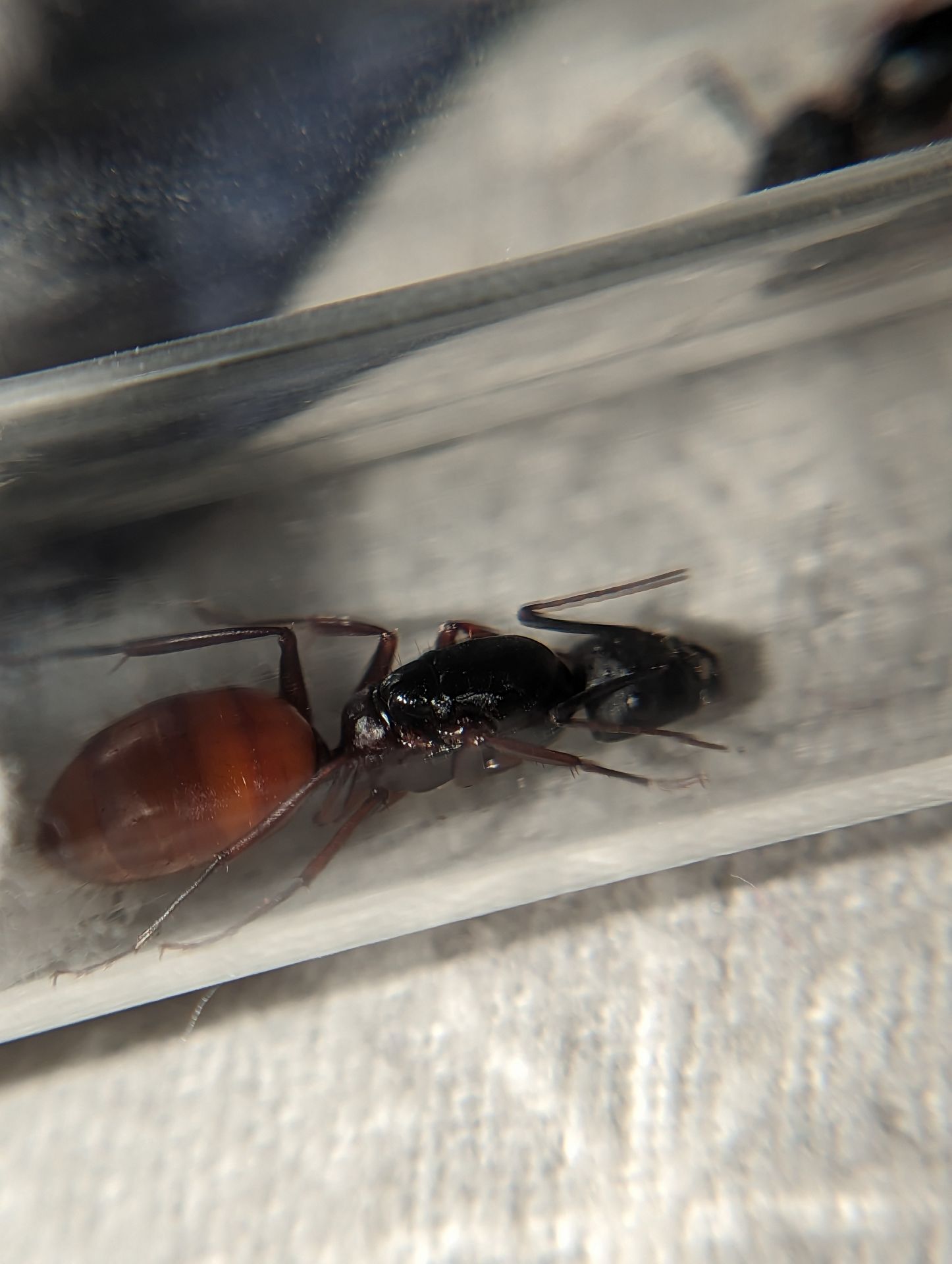
Edited by AntsCali098, May 15 2023 - 4:39 PM.
- bmb1bee likes this
Interested buying in ants? Feel free to check out my shop!
Feel free to read my journals, like this one.
Wishlist:
Atta sp (wish they were in CA), Crematogaster cerasi, Most Pheidole species
#6
 Offline
-
Posted May 18 2023 - 4:45 PM
Offline
-
Posted May 18 2023 - 4:45 PM
Most (but not all) males also have straight antennae, as well as their head is usually less wide than their thorax. Often, a queens wing scars are a dead giveaway with semi claustral queens that sometimes look workerlike, for instance a Pseudomyrmex or Odontomachus queen may look like a worker at first glance. Look for a big ol gaster and thorax with a fat head and bent antennae for fully claustral.
There are always exceptions to the rule, however generally those examples above will help.
There are always exceptions to the rule, however generally those examples above will help.
1 user(s) are reading this topic
0 members, 1 guests, 0 anonymous users




